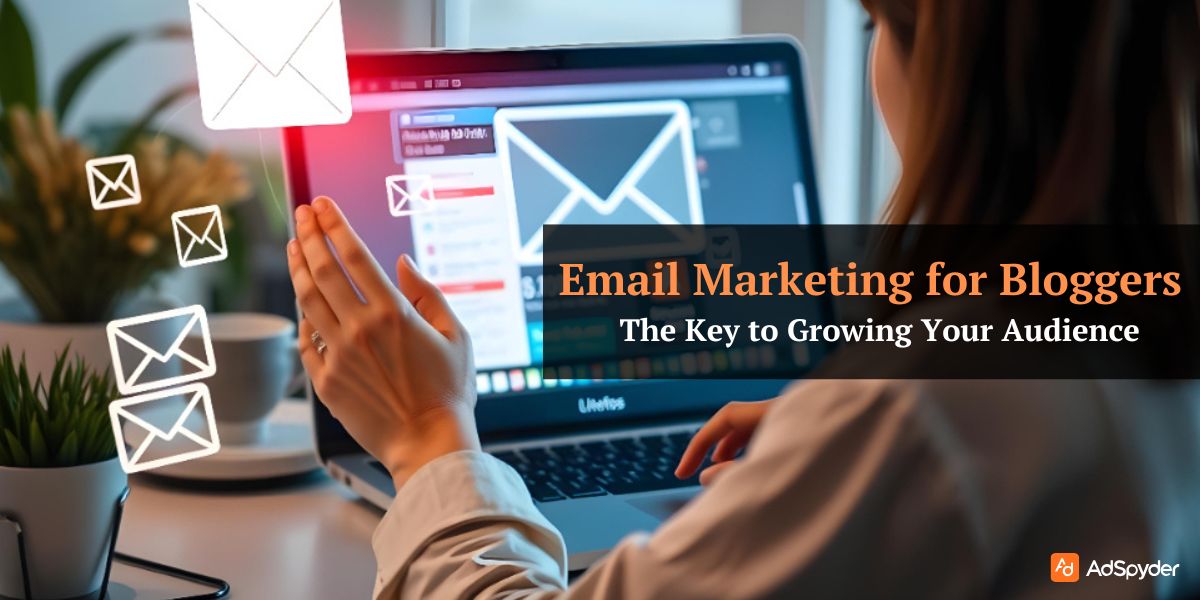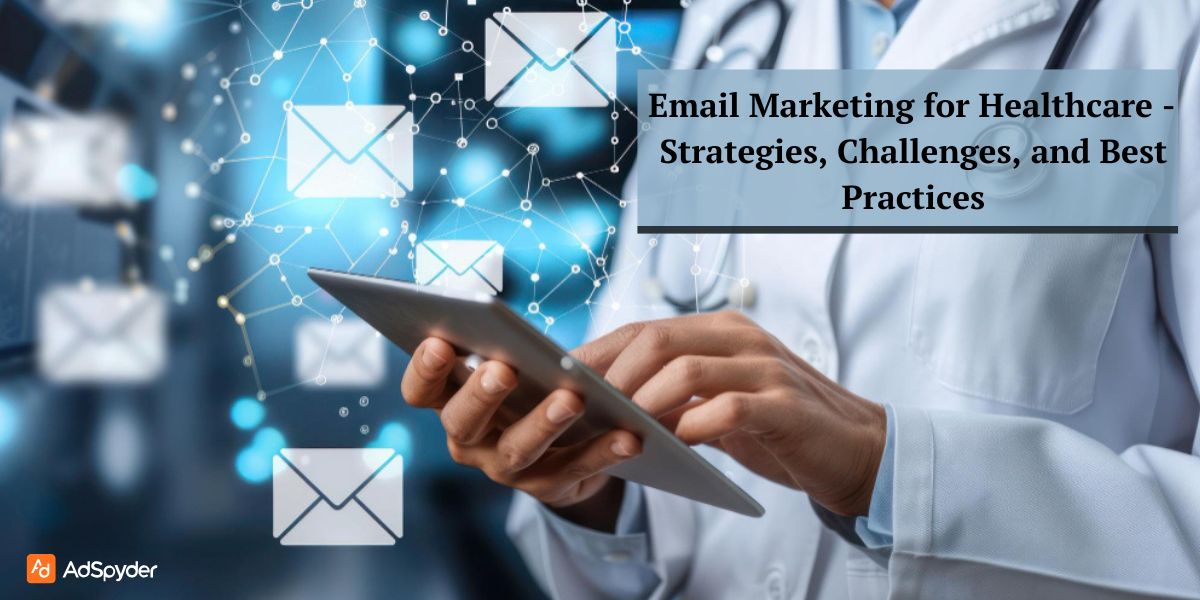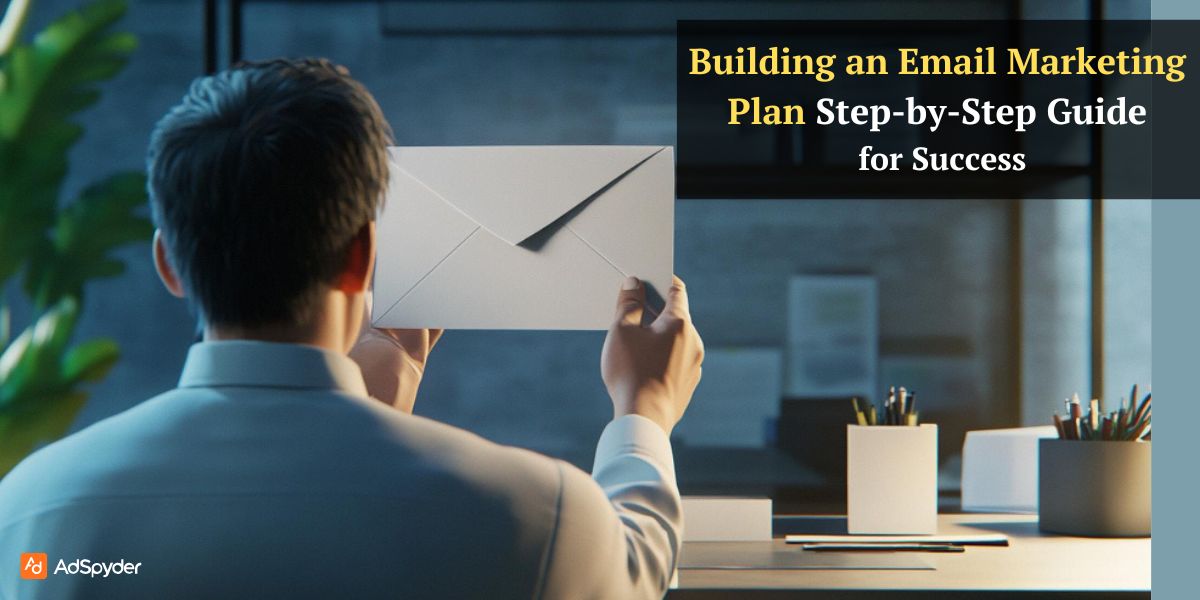With digital marketing evolution, email marketing started to boost. It is one of the direct methods traditionally used to promote and advertise campaigns while maintaining the (ROI) with less spending. However, having a well-organized email marketing strategy is essential to maximizing its potential. This blog will provide information and understanding about the actions required to Building an Email Marketing Plan, engage your audience, and accomplish your business objectives.
Ready to Elevate your Marketing Strategy?
Define Your Goals for Email Marketing
Before planning and strategizing, it is important to be clear about your objective and what you want out of it. Set goals to measure the success and overcome the challenges by taking necessary steps to optimize and adjust the marketing efforts. Judging something without knowing exactly your target result is difficult and confusing.
- Increase Brand Awareness: Promote and introduce your brand to new audiences by targeting them through email marketing, as most email inventories have opt-in data.
- Generate Leads: Create compelling offers, such as clickable content or free trials, something that looks out of the box and compels users to get engaged with your brand.
- Boost Sales: Develop promotional campaigns targeting specific products or services to drive sales during particular times of the year.
- Enhance Customer Retention: Use regular communication to engage your existing customers and encourage repeat purchases.
By understanding your business needs and the goal that you want to achieve through email marketing, you can strategize things accordingly and be more specific and focused towards it by regularly checking the growth curve compared to your goal.
Identify Your Target Audience for Email Marketing Strategies

Understanding your audience is crucial to get the best ROI with less spend in your email marketing campaigns. Audience segmentation allows you to tailor your messages to specific groups, depending upon the brand, you can analyse which audience and what age group audience will be more interested in it, this will increase engagement and conversion rates. Lets see how you can identify your target audience:
- Demographics: Research the demographics that best suit your brand on age, gender, location and income level to create an ideal customer.
- Behaviour: The behaviour of customers plays a pivotal role in deciding on changing any marketing plans or not as it can help you analyze how they interact with your emails and websites. This piece of information can be used to decide which segment of the audience seems more interested in your brand.
- Interests: Conduct surveys or polls to learn more about what interests your audience. This information can help you craft content that resonates well with your customer’s preferences and interests.
Creating detailed buyer personas can further refine your understanding of your audience. Based on the data received and analysis done through research you will have an idea of your ideal customer. It helps you visualize and target your audience effectively, ensuring that your email campaigns speak directly to their needs and preferences.
Related: Email Marketing for Small Businesses
Choose Your Email Marketing Platform
With the increase in digital marketing and the ways of promoting it through email marketing to get desired leads an increase in surge of email platforms came into existence. Different platforms offer various features, so selecting the right email marketing platform is crucial. Choose one that aligns with your needs. Let’s look at the overview of some of the most popular email marketing platforms:
- Mailchimp: Known for its user-friendly interface and robust analytics, Mailchimp is ideal for beginners. For all small businesses that are planning to start their journey through email marketing in the digital space, it’s one of the best platforms to start with.
- Constant Contact: Offers excellent customer support and a variety of templates, easy to use, if you are someone getting started with new and want to explore with little guidance then it will prove to be best for you.
- ConvertKit: Designed for creators and bloggers, as it focuses more on automation with the previous whatever data is there and depending upon that targets the audience segment in a more defined way.
When choosing a platform, make sure to keep the following key features in mind and choose accordingly:
- Automation: Look for a platform that allows you to automate your email campaigns, as they save a lot of time and less work, such as welcome emails, follow-ups, and promotional series.
- Analytics and Reporting: Platform providing analytics dashboard to track the performance of your campaign that helps you make precise data-driven decisions and enhances your targeting and results.
- A/B Testing Capabilities: Testing different email elements, like trying different subject lines or content that give better performance it’s essential for optimizing your campaigns.
By carefully comparing and evaluating your options, you can opt for the best email marketing platforms that align well with your business needs and technical aspects.
Building Email List for Email Marketing

A well-defined email list will act as a backbone of successful email marketing. A few strategies for growing your email list are suggested below:
- Opt-in Forms on Your Website: Place sign-up forms or contact forms prominently on your website, such as in the footer, sidebar, or as a pop-up. Try new creative ways to show it to users meanwhile, it should be easy for users to subscribe as well.
- Lead Magnets: Innovative ideas of promoting through eBooks, templates etc in exchange for email addresses. This promotional activity where lucrative incentives and offers are provided encourages visitors to sign up.
- Social Media Promotions: Start by utilizing your own social media channel. Share exclusive offers or content available only to subscribers. This will promote your email list.
- Events and Webinars: Host online or offline events requiring email registration. This will not only build your list but also position you as an expert in your field
With time many will join you as new subscribers and few may change their mind and their interest may no longer stay with your brand. So regularly clean your email list by removing inactive subscribers and ensuring your contacts are accurately segmented. This practice will improve your deliverability rates and engagement.
Check Out: Email Marketing for IT Services
Crafting Your Email Content: Building an Email Marketing Plan
Crafting interactive and compelling email content is essential as it will engage your audience. Different types of email content can serve various purposes, including:
- Newsletters: Regular updates about your business, industry news, or helpful tips can keep your audience informed and engaged.
- Promotional Emails: Extravagant offers, discounts, and new product launches to drive conversions.
- Transactional Emails: Emails updating regarding the purchase, order tracking information like confirmation, shipping, etc to maintain clear communications and tracking of things easily for customers.
- Re-engagement Campaigns: Target inactive subscribers with personalized offers or content to encourage them to reconnect with your brand.
Tips for Crafting Email Content
- Personalization: Nowadays people like more customized things as this makes them relate to them thus creating content of users’ interests or behaviors. Personalized emails have higher open and click-through rates compared to normal ones.
- Clear Calls to Action (CTA): Make your desired action clear, whether it’s making a purchase, signing up for a webinar, or reading a blog post. Use compelling language that encourages the users to take action and click on it.
- Consistent Branding: Ensure your emails reflect your brand’s identity through consistent use of the same colors, fonts, and logos as your brand. With consistent email marketing content, your content will resonate more with the subscribers and you can build trust and recognition for your brand.
Design Your Emails For Building an Email Marketing Plan

The format and how it is presented to your audience plays a significant role in how they perceive and engage your emails. A well-structured email not only captures attention but also shows a road map towards your desired actions. A few elements that you should consider while designing your emails are listed here:
Responsive Design
User are more inclined towards using all website applications on their mobile so creating emails that look and feel the same as on desktop browsers is crucial and thus make mobile-friendly emails. A responsive design adjusts the layout according to the screen size, providing an optimal viewing experience across all devices.
Key Design Elements
- Layout and Structure: Design your email content in an organized layout, clearly defining things that are of importance at first and then the rest simultaneously. Consider using headings, bullet points, and images to make the content easy to read.
- Colour Schemes and Fonts: Do not play with colours with time people are turning their choices to simple and classy things, so stick to your brand’s colour palette and choose fonts that are not that fancy, and easy to read. Consistent use of colours and fonts reinforces brand identity.
- Images and Multimedia: Incorporate high-quality images, GIFs, or interactive videos to make your emails visually appealing. However, make sure that these images do not make the email so heavy that it takes longer than usual to open as this can lead to increased bounce rate.
Tools for Designing Professional-Looking Emails
Utilize email marketing platforms that offer drag-and-drop email builders, or consider dedicated design tools, where you can find formats and themes that are ready to use like Canva for creating custom graphics. These tools make it easy to design visually appealing emails without needing extensive design skills.
Implementing Automation For Building an Email Marketing Plan

Email automation can significantly enhance your marketing efforts by sending targeted messages based on user behaviour and preferences. Here’s how to effectively implement automation:
Overview of Email Automation
Automation allows you to send personalized emails at scale, ensuring that your audience receives relevant content at the right time. Automation saves a lot of time and increases your efficiency to enhance your marketing efforts.
Types of Automated Emails
- Welcome Series: Design and send a series of welcome emails to all your new users who have subscribed to your brand, introducing them to the benefits and offers. Give them valuable insights to set the tone for future interactions.
- Abandoned Cart Emails: Repeated emails reminding customers who left items in their shopping carts to complete their purchases is one of the effective ways. Include product images and a clear CTA to encourage them to return and make the purchase.
- Post-Purchase Follow-Ups: After purchase, send thank-you emails, solicit feedback, or offer related products to encourage repeat business.
Setting Up Automation Workflows
Most email marketing platforms provide templates and tools for creating automated workflows. Define the triggers for each automation (e.g., signing up, making a purchase) and outline the series of emails to be sent. Regularly monitor and adjust your automation based on performance metrics.
Explore Now: Email Marketing for Restaurants
Analyzing Your Email Performance For Building an Email Marketing Plan
To ensure the effectiveness of your email marketing plan, it’s essential to track and analyze key performance metrics. The following metrics are crucial to pay attention to:
Key Metrics to Track
- Open Rates: Measure the proportion of receivers who click through to your emails. A low open rate may indicate that your subject lines need to be improved and changed.
- Click-Through Rates (CTR): This parameter gives you insights and data regarding the users, and how many of them clicked on the link within the email that they received from your end. You can analyze and assess whether your email content is effective in compelling them to click your email.
- Conversion Rates: Track the percentage of users who purchased your product, as this is the ultimate measure of your email marketing success. To track down the end goal which is conversions gives you insights of your marketing efforts.
- Unsubscribe Rates: heck how many users after clicking on your email opted out of it. Data showing a high unsubscribe rate alarms that your content is not that relatable to your audience and their interest.
Tools and Techniques for Analyzing Data
Utilize the analytics dashboards provided by your email marketing platform to gather insights. Regularly reviewing your key metrics and parameters that play a crucial role in deciding the success of your marketing plan, look for patterns and trends followed by subscribers to plan better for your future campaigns. Additionally, consider conducting surveys or feedback forms to gain qualitative insights from your audience.
Making Data-Driven Decisions
Use the data you collect to make informed adjustments to your email marketing strategy. If you observe any content that is consistently used and is performing better, consider incorporating more of that content into your future campaign. Even try to make similar types of content taking the same content as reference. Continually refining your approach based on performance metrics will enhance your overall effectiveness.
Testing and Optimization of Email Marketing Plan

Testing and trying out new trends plays an important role in enhancing your marketing efforts. A/B testing allows you to compare two versions of email to decide which one performs better. To make you more aware of these methods we will discuss how to approach testing and optimization for effective email marketing:
Importance of A/B Testing
A/B testing is a method through which you get insights into what resonates with your audience. By testing different elements of your emails, you can make informed decisions that improve engagement and conversions.
Elements to Test
- Subject Lines: Try eye catchy subject line something that is out of the box, try different options to see which one proves to be driving more open rates. Consider testing personalization, urgency, or curiosity-driven approaches.
- Content Formats: Test variations in email content, such as plain text versus HTML, or short emails versus long-form content.
- Send Times: Analyze when your audience is most likely to engage with your emails. Test different send times and days to identify optimal scheduling.
Interpreting Test Results
Once your tests have concluded, review the data to understand which version performed better and why. Use these insights to inform future campaigns and continually refine your email marketing strategy.
Must See: Email Marketing for Bloggers
Compliance and Best Practices
Staying compliant with email marketing regulations is crucial for maintaining trust with your audience and avoiding potential legal issues. Security should be kept at utmost priority to avoid any breach of this compliance few points are noted below:
Overview of Email Regulations
Get acquainted with laws like the General Data Protection Regulation. (GDPR) and the CAN-SPAM Act. These laws outline requirements for obtaining consent, managing subscriptions, and protecting user data.
Best Practices for Maintaining Compliance
- Obtain Explicit Consent: Always ensure that subscribers have opted in to receive your emails. This can be done through clear opt-in forms that outline what users are signing up for.
- Provide Clear Unsubscribe Options: Give clear buttons for unsubscribing to your users in every email these clickable buttons should be easy to locate and allow visitors to opt-out if they choose.
- Protect Subscriber Data: Use secure practices to handle and store subscriber data, ensuring privacy and compliance with regulations.
Ethical Considerations in Email Marketing
Beyond compliance, focus on ethical email marketing practices. Gaining subscriber’s trust is very important to foster such a thing its essential to be transparent about the usage of users’ data and respect their preferences. This will lead to better engagement and a long-term trustworthy relationship with the subscribers.
FAQs
The key components that play a crucial role in planning email marketing include a well-defined goal, audience segmentation like knowing the ideal customer, platform selection, list building, content creation, design, automation, performance analysis, testing, and compliance.
To build up your email list there are various ways of them are by creating opt-in forms, lead magnets, social media promotions, and events to attract subscribers. This will encourage them to fill in their data for joining the brand.
There are various ways of reaching out to your ideal customers through newsletters, promotional emails, transactional emails, and re-engagement campaigns.
The open rate is calculated by several customers who see the email and as soon as they perform any action like clicking on the email opening it or browsing it by the number of emails sent. To improve the open rate try experimenting with subject lines, segment your audience, and send emails at strategic times.
Regularly check the key metrics open rates, click-through rates, conversion rates, and unsubscribe rates.
A/B testing compares two email versions to see which performs better, helping to optimize content and better engagement.
Obtain explicit consent. Make sure your content follows all data privacy and compliance rules and regulations. Further provide unsubscribe options, and protect subscriber data.
Check Out – Bulk Email Advertising
Final Thoughts for Building an Email Marketing Plan
Building an effective email marketing plan involves several steps. Define your goals and identify your target audience to crafting compelling content and analyzing performance metrics. There are several precautions and measures that need to be taken care of while starting with it. However, following this in-depth knowledge you can easily create an organized approach to email marketing. This is while resonating with your audience preferences.




